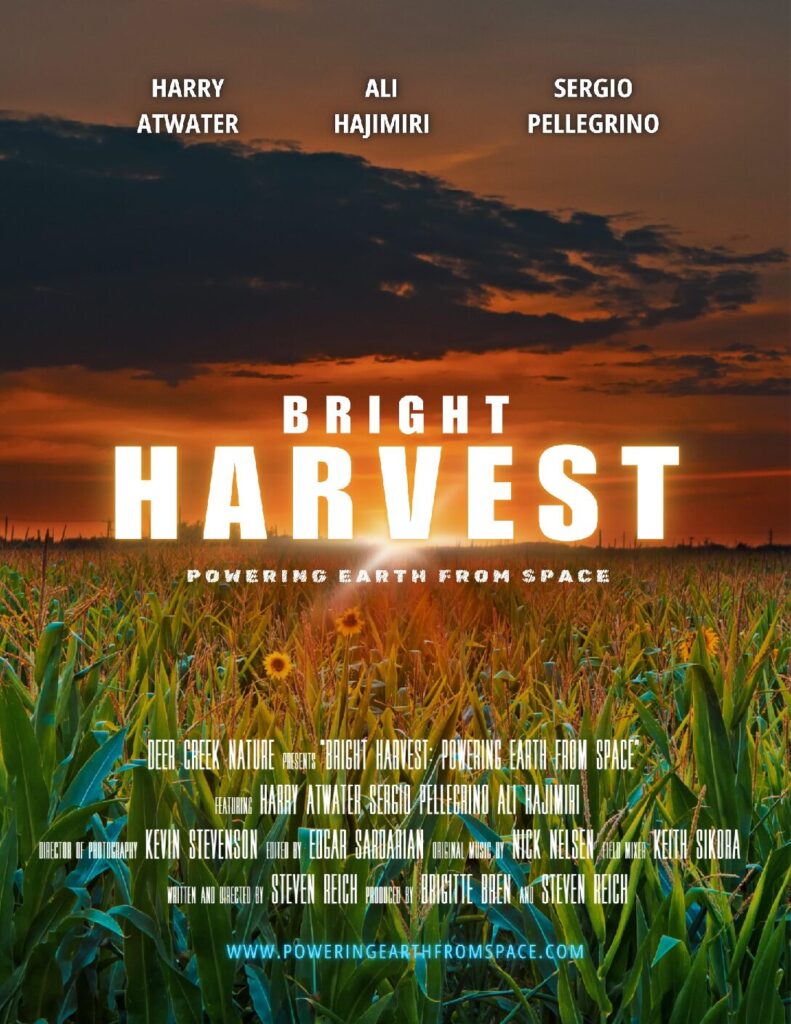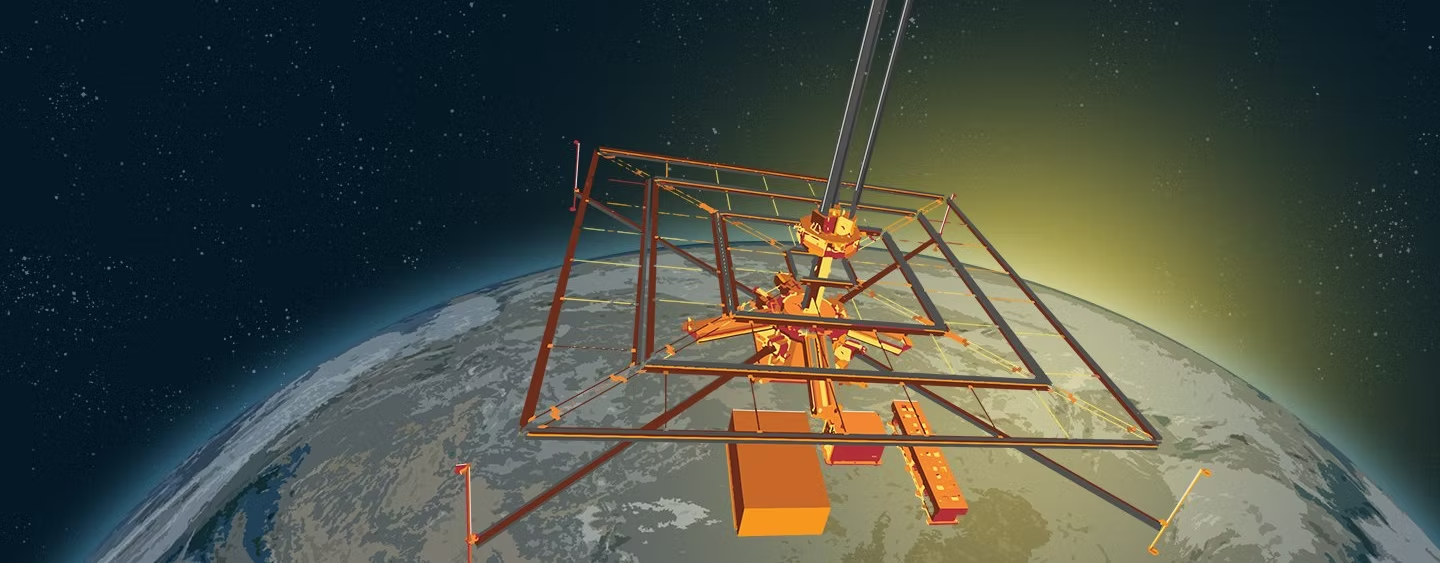Isaac Asimov’s 1941 short story “Reason” imagines the possibility of powering earth from a solar station in outer space. “Our beams feed these worlds energy,” a human explains to a robot, “drawn from one of those huge incandescent globes that happens to be near us. We call that globe the Sun…”
More than 80 years later, Asimov’s vision is edging closer to reality, as the short film “Bright Harvest: Powering Earth from Space ” explains. The film was screened at the Graduate School of Design (GSD), with the support of the Master in Real Estate (MRE) program, after which Jerold Kayden, MRE founding director and Frank Backus Williams Professor of Urban Planning and Design, led a discussion with the film’s producer, Brigitte Bren and producer, director, and writer Steven Reich .
The film’s narrative begins over a decade ago, when three California Institute of Technology scientists came together to talk about the possibility of powering earth continuously with solar energy from outer space. Harry Atwater, Caltech Otis Booth Leadership Chair in the division of Engineering and Applied Science, says in the film, “I thought it was a crazy idea to begin with.” Still, citing a commitment to projects with the potential to help the world as an established researcher, he began collaborating with Ali Hajimiri, Bren Professor of Electrical Engineering and Medical Engineering, and Sergio Pellegrino, Joyce and Kent Kresa Professor of Aerospace and Civil Engineering. Hajimiri and Pellegrino now co-direct the space-based solar power project at Caltech.

While governments and large-scale corporations typically control energy collection and dispersal, explains Hajimiri, this project could give access to energy to anyone, with the capability to distribute it to various sites around the world depending on where the needs lie. “It has the potential to democratize access to energy,” says Hajimiri “the same way that wireless access democratized information.”
The trio explains that the system is “green” and the closest we can get to clean energy, as it’s gathered from the sun. They note that their design differs from others under production, as it beams energy in a non-ionizing way, which is how microwaves and radio waves distribute energy, and therefore poses low risk to humans. Additionally, it is set up in geospace, further out than near-earth orbit, which is heavily trafficked by existing satellites.
One of the greatest challenges the team faced in designing the solar panels was weight: the panels had to be light enough to pack and launch easily, and then expand once in space. “The system we envisaged,” says Pellegrino, “is a system of extreme lightness.”
In addition, since the panels would be exposed to the elements in space, they had to be weather-resistant and durable. They designed a panel made of a series of microchips that could be curled and bent. Once the team had refined a paper-thin panel, they turned to the ancient Japanese practice of origami to fold it into a small cylinder.
On January 23, 2023, using one of SpaceX’s rockets, they launched a prototype into space, and on March 3, successfully transferred energy . The film’s tension rises as we watch the team set up, in May, on the roof of the Gordon and Betty Moore Laboratory of Engineering at Caltech, to see if they would be able to receive power from the device as it passes overhead. One of the undergraduate students, Raha Riazati, professes her doubts as they watched the clock tick with no sign from above. Then, thirty seconds later, they see the signals come through: it worked. Graduate student Ailec Wu, the programmer, explained that he had forgotten to delete a bug that caused a delay. The audience laughed in appreciation of the very human moment in an almost surreal demonstration of how photovoltaic energy can be transmitted from space.
During the discussion after the screening, producer Brigitte Bren noted that 18 people—including the foundational trio—have been working on the project for the last decade; several PhD students have graduated and moved on, with new students coming on board. The project was funded by her husband, philanthropist Donald Bren, chairman of The Irvine Company.
Every year for the last decade, Brigitte and filmmaker Steven Reich visited the lab to gather information and document the team’s progress. On one such visit, she recounted, she arrived to find paper origami pieces taped up all over the walls, as a student had been researching how best to fold the panels. Grace La, professor of architecture and chair of the architecture department at the GSD, noted that origami was a source of interest for students, including some who were experts in the practice and who could be excellent cross-disciplinary collaborators.
Kayden sees the drive for interdisciplinary work among MRE students as well. “All students and practitioners of real estate understand that success depends on insights and contributions drawn collaboratively from multiple fields and disciplines such as design, finance, law, planning, management, and public policy, among others,” he noted. “From its inception several years ago, the curriculum and pedagogy of the GSD’s MRE program have imparted the value of collaborative multidisciplinary efforts.”
Sarah Whiting, Dean and Josep Lluís Sert Professor of Architecture, emphasized the importance of recognizing the research that happens only at universities, and how discoveries made by academics and scientists contribute to humanity. One of the purposes of this film, noted Reich, in addition to advocating for space solar energy and highlighting the work happening at academic institutions, is to inspire more students to go into science research; this is why they made sure to feature an undergraduate.
Looking ahead to the project’s next steps, Bren and Reich explained that, in the service of providing “energy to anyone” with solar power from space, the team estimates that it would cost 10 cents per kilowatt hour. They are also considering questions such as how the system will be disposed of once it has run its course. Bren and Reich hope to persuade the US government to invest in the program. Other countries are also working towards harnessing outer space solar power, she says, but the Caltech team believes they still have an edge. Soon, perhaps, we’ll be living the reality of which Asimov dreamed.
